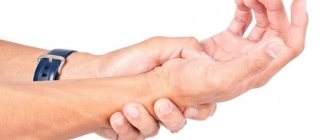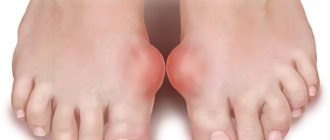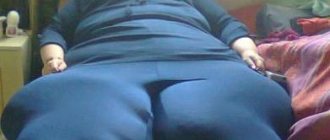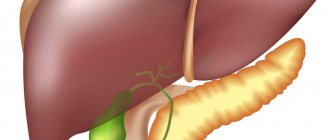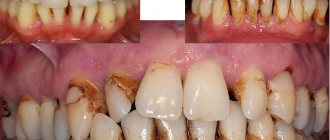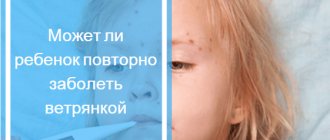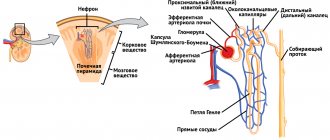Rheumatoid arthritis
The disease is long-term, accompanied by inflammation of the joints and surrounding tissue. People of any age category fall under the risk factor. The female half of the population experiences rheumatoid arthritis more often than men. The disease is caused by genes, infections, and changes at the hormonal level.
Symptoms are manifested by damage to symmetrical joints. He creeps up slowly. At first, barely noticeable pain, unnoticeable stiffness, and mild fatigue are noticeable. When the described symptoms occur, the joints feel stiff and warm to the touch. Later, rheumatoid arthritis causes bone deformation.
Difficult to diagnose. The examination shows normal results, rarely causing concern. It is carried out so that the doctor determines the course of treatment for the disease. For this:
- X-rays, ultrasound diagnostics, MRI are performed;
- A blood and sinusoidal fluid test is taken.
Rheumatoid arthritis
Symptoms and signs of arthritis
The signs that the joint is inflamed, as well as the causes, differ depending on the type of pathology.
- The first signs of rheumatoid arthritis are pain, a feeling of stiffness, swelling in the affected joint, and redness of the skin. Sometimes small nodules can be felt under the skin. They can move and appear not only on the affected joint, but also on the back of the head, internal organs, etc. The disease rheumatoid arthritis manifests itself in pain in the eyes, numbness of the hands and feet, and excessive sweating. Also, sometimes the salivary glands become inflamed.
- Symptoms of arthritis caused by gout begin with swelling, redness and severe pain in the affected area. The pain is most severe at night.
- Signs of arthritis caused by infection include fever, chills, headache, muscle aches, nausea and vomiting. Joint deformation occurs. It is worth noting that all these symptoms are more pronounced in childhood. The degree of their manifestation in older people decreases.
- Traumatic joint arthritis has the same symptoms as osteoarthritis. This is pain, swelling and crunching at the site of inflammation.
- Osteoarthritis does not manifest itself at first. Often, symptoms do not appear even after doctors diagnose the disease. The only symptom is pain in the affected area. It intensifies with movement and excessive physical exertion. Over time, growths appear on the joints.
So, how does arthritis manifest? All symptoms can be combined into one list. Most often this is severe pain, crunching, swelling and redness in the affected area. Sometimes there is a local or general increase in temperature.
Treatment
It lasts a lifetime. Includes:
- taking medications;
- physiotherapy;
- therapeutic exercises;
- in rare cases, surgery.
Timely visit to the clinic guarantees delay of joint destruction.
The first thing the doctor prescribes is antirheumatic medicine. Taken in parallel with strengthening exercises. Blood tests are taken regularly.
To relieve inflammation and reduce tumor formation, corticosteroids are prescribed. They are not taken for long due to the risk of side effects.
Rheumatoid arthritis is treated using biological drugs. Relevant when other drugs have not worked. This type of medication is administered intramuscularly or intravenously as injections.
When there is a need for serious correction of the joints, surgical intervention is prescribed. Partial removal is sufficient; there are cases of complete joint replacement.
Physiotherapy is a method of treating rheumatoid arthritis. It is carried out in doses, a set of exercises is selected individually.
When undergoing treatment for rheumatoid arthritis, proper nutrition should not be ignored. Don't despair when you notice symptoms of the disease. The doctor's efforts will not lead to results if the patient does not fight.
Juvenile type of arthritis
What is arthritis?
Arthritis is a term that refers to inflammatory joint damage, rather than a specific disease. It may be either the underlying disease or a manifestation of any other ailment (spondylitis, rheumatism). However, it can be cured and offers a favorable prognosis. This article will discuss the most accessible and effective methods with proven effectiveness.
The risk group includes every person over 65 years of age. Among pensioners, the number of people suffering from this pathology is more than 60%...
But you shouldn’t think that the disease is exclusively senile. It can affect people at a younger age and even children. It all depends on the reasons causing pathological changes in the joints.
It is believed that tens of millions of people around the world suffer from symptoms of arthritis, and according to recent research, this number is increasing every year. According to (CDC), the figure is as much as 22.7% of the total adult population.
.
Healthy joint and arthritis
Juvenile rheumatoid arthritis
Children are susceptible to the disease. It manifests itself as swelling of the joints and pain. Symptoms of a subtype of rheumatoid disease begin with tumor formations, limping occurs, and fever begins. The presence of the disease is established by examining the fluid removed from the tumor formation. An X-ray, ECG, and observation by specialists are performed.
Rheumatoid juvenile arthritis is initially treated with medications:
- non-steroidal anti-inflammatory drugs;
- corticosteroids;
- antirheumatic;
- biological.
Physical exercise keeps muscles toned. It is not recommended to exclude swimming, walking, cycling, you should just limit the load.
During treatment for rheumatoid arthritis, psychological support from family and friends is important. Receiving positive emotions has a beneficial effect on a successful outcome.
Juvenile rheumatoid arthritis does not require surgery. Sometimes a disease can be cured only in this way.
Arthritis septic
Treatment methods
Etiotropic therapy (treatment aimed at eliminating the cause of the disease) is possible only for a few forms of arthritis - infectious, allergic, gouty.
For arthritis with a subacute or chronic course, various anti-inflammatory drugs, both non-steroidal and steroidal (corticosteroid), have become widespread. Drugs of the latter group are used mainly for local (intra-articular) therapy.
When acute inflammatory phenomena in the joints subside, physiotherapeutic procedures (erythemal doses of UV radiation, electrophoresis of analgesics, amplipulse therapy, hydrocortisone phonophoresis) are indicated to help reduce pain and residual inflammatory reactions, preventing the development of fibrosis and dysfunction of the joints.
Exercise therapy (physical therapy) and therapeutic massage are widely used, aimed at preventing contracture and preserving joint function. The complex of rehabilitation measures includes sanatorium-resort treatment (balneotherapy, mud therapy, etc.). For some arthritis, such as rheumatoid arthritis, surgical treatment is used. The nature of the surgical intervention (arthrotomy, synovectomy, joint resection, arthrodesis, surgical arthroscopy, cheilectomy, etc.) depends on the form of arthritis. If the function of the joint is impaired as a result of arthritis, reconstructive surgeries, endoprosthetics, etc. are performed.
Septic arthritis
It develops when bacterial or fungal infections affect the joint. Common locations are hip and knee. The risk of getting the disease exists when implants are implanted, while taking medications that suppress injury or the immune system.
Symptoms appear quickly: fever, swollen lesions, severe pain, especially during movement, redness.
In infants, symptoms are supplemented by pain from changing clothes. The child is shivering, the affected limb hurts, he cannot rise, he is capricious.
Degrees of Arthritis
In its development, arthritis of the joints passes through four degrees. Each of them has a set of characteristic symptoms and signs.
- The first degree of the disease is practically not diagnosed. It can be recognized by changes in the general condition of the body. First there is limited mobility. Then pain, constant fatigue and weakness develop. The pain is mainly felt at night and goes away in the morning. This degree of arthritis is easiest to diagnose in children. They become less active, often fall and do not want to play active games with their peers.
So, is arthritis treatable at this stage? Yes. If arthritis is recognized in time, its treatment can be significantly simplified and the condition can quickly improve.
- The second degree is characterized by the appearance of erosions on the bones. The joints become thinner, which leads to the appearance of many unpleasant symptoms. Swelling and redness appear on the affected area. While driving, you can clearly hear the crunching sound. The person feels pain, which, as in the previous case, intensifies at night.
The most difficult thing to determine is arthroid lesions of the hip joint. The disease of the second degree in this case manifests itself in pain in the knee, which causes a limp. Most often, it is during this period that a person decides to visit a doctor.
- Can third degree arthritis be cured? No, because deformation of the joints occurs and the person becomes disabled. It is difficult for him to move and take care of himself. The pain does not stop even in those moments when there is no need to do anything. Increasingly, muscle spasms occur, due to which the arms and legs are in an unnatural position.
- The last, fourth, degree of arthritis is characterized by irreversible changes. A severe inflammatory process deprives the patient of mobility. Adhesions appear inside the inflamed joints. The only way to get rid of pain is now with the help of medications.
The fourth degree involves treating the symptoms of the disease. It is no longer possible to completely recover from inflammation.
Psoriatic arthritis
It manifests itself in patients with psoriasis in the form of an inflammatory effect of the joints. Often occurs when the skin is damaged, and can appear before it. The above classification places it in the allergic group.
Symptoms:
- small bones of the lower and upper extremities are affected;
- joint disease is asymmetrical;
- the skin turns blue;
- the disease spreads to other organs:
- iritis develops when checking the eyes;
- if myocardiums are involved - myocarditis;
- with damage to the urinary tract - urethritis.
Disturbances occurring in the blood are nonspecific.
Arthritis symptoms
Typical manifestations of arthritis consist of such characteristic signs as:
- joint pain,
- swelling and fluid in the joint,
- increased skin temperature,
- the appearance of redness,
- dysfunction.
Pain on palpation (palpation) usually spreads over the entire surface of the joint, especially along the joint space. Laboratory studies of the synovial fluid (viscosity, cellular composition, protein content, enzymes, microorganisms), and, if necessary, study of the cellular composition of the synovial membrane, for example, with pigment-villous synovitis, help to clarify the nature of the inflammatory process.
The main method of X-ray examination for arthritis is radiography of the affected joint in two standard projections. According to indications, arthrography, tomography, and electroradiography are performed.
Infectious-allergic polyarthritis
Appear when sensitivity to a particular pathogen is high. Often, before polyarthritis, a person suffers from a respiratory tract infection. It can arise after tuberculosis. These types of disease are associated with diseases of the stomach and intestines. A couple of weeks after infectious diseases, the joint bones hurt. Pain, tumor formations occur, and joint movement disappears. The disease most often affects the lower extremities.
Rheumatic type of arthritis
Diagnosis of arthritis
Diagnosis of the disease is both complex and simple at the same time. The difficulty is that the disease can be asymptomatic for years and manifest itself only when it has actually passed into an acute or chronic stage
When one of the stages of the disease occurs, making a preliminary diagnosis is not particularly problematic, since the symptoms are almost the same for all forms of the disease
To establish an accurate diagnosis and determine the causes of the disease, it is necessary to conduct a comprehensive examination of the patient, which includes a large number of clinical and laboratory tests.
The effectiveness of treatment directly depends on how accurately the diagnosis is made. Methods for diagnosing arthritis include:
- Arthroscopy;
- Radiography;
- Ultrasonography;
- Computed or magnetic resonance imaging;
- Serological and biochemical blood tests;
Rheumatoid arthritis
It is considered a companion to rheumatism. The classification classifies it as an autoimmune disease that exhibits symptoms:
- damage to large bones in combination with heart tissue (myocarditis, endocarditis);
- pain in the heart, shortness of breath, feeling of pressure on the chest;
- streptococcal infection, pathology of the upper respiratory tract (sore throat, pharyngitis) goes away, after a couple of weeks rheumatoid arthritis sets in;
- the initial stage proceeds rapidly, accompanied by fever, acute pain, and swelling.
Rheumatoid arthritis is characterized by a symmetrical development - it begins on one limb, passes after a while and returns to the other, symmetrical to the first.
Causes
The causes of arthritis are various - infection, hypothermia, immune failure, neurology or stress. Also, the appearance of arthritis is promoted by poor nutrition, metabolic disorders, and injuries (often in athletes or people whose profession involves constant overload and injury to joint joints).
Inflammation of the joint capsules is clearly visible to the naked eye. Other manifestations of the disease are not always visible (inflammation of internal organs in the initial stage occurs without symptoms).
Inflammation of the joint capsules
The main prevention of painful inflammation is maintaining immunity, good nutrition, avoiding hormonal contraception, and a healthy lifestyle. And the main treatment is anti-inflammatory drugs, antimicrobial agents and anesthetics (painkillers, ointments, powders).
Treatment
The doctor, having studied the symptoms and conducted an examination, will prescribe anti-inflammatory, rheumatoid drugs, and drugs that destroy streptococcus. The course of treatment will continue with antibiotics and medications that improve metabolism. Sometimes corticosteroids are given orally.
To improve the functioning of the heart, bed rest is prescribed; compliance will maintain the normal functioning of the organ. The diet includes products containing vitamins C and K. Table salt is excluded.
Arthritis treatment
Treatment and diagnosis of joint arthritis are inextricably linked, as are symptoms and treatment methods. The sooner it starts, the faster the condition will improve.
It is important that the treatment is comprehensive. It is impossible to cure with medication alone. They will only help relieve symptoms.
It is equally important that the treatment of inflammation is supervised by a doctor. Otherwise, it may not bring the desired effect and will only worsen the condition.
Complex treatment
So, how to treat joint inflammation and is arthritis curable? It must be remembered that symptoms and treatment are closely related. Therefore, first of all, the doctor prescribes the use of medications that remove symptoms or reduce their severity. They may vary depending on what types of arthritis there are.
For example, with an infectious form, it is recommended to take antibiotics. For viral arthritis, the use of non-steroidal anti-inflammatory drugs is indicated. Local agents, such as pain-relieving ointments and gels, will help relieve pain. And to reduce the effect of drugs on the stomach - drugs from the group of gastroprotectors.
How to treat joint inflammation if spasms occur frequently? Muscle relaxants will help here. Gouty arthritis is treated with drugs that help remove salts.
To restore damaged cartilage tissue, the doctor may prescribe chondroprotectors, as well as vitamin complexes with calcium.
Swelling is relieved by a compress based on dimexide. To make it, you need to mix 50 ml of dimexide, 30 ml of water, 30 ml of novocaine and 1 ampoule of hydrocortisone. Apply the resulting mixture to the affected joint and leave for about 1 hour. Such compresses are an excellent way to get rid of pain.
Comprehensive treatment for arthritis involves procedures such as:
- Warming up,
- Massage,
- Ultrasound,
- Mud baths.
Exactly which and in what quantity of procedures are indicated for a particular patient is decided solely by the attending physician (traumatologist, rheumatologist and others).
What to do if conservative treatment for arthritis does not bring results? In such cases, surgical intervention is indicated. During surgery, the doctor removes the damaged joint and replaces it with an implant.
Diet for arthritis
Treatment for arthritis is also a balanced diet. Only a specialist can tell you how to get rid of arthritis with the help of a balanced diet, who will exclude from your menu those foods that have a negative effect on the condition of the joints. And also by including in it something that will help them recover, strengthen the immune system and improve the general condition of the body.
So, you need to add to your diet:
- fresh vegetables and fruits,
- roots,
- cereals,
- milk and dairy products,
- lean types of meat,
- fish.
At the same time, it is worth limiting the consumption of salt and sugar, fatty meats, seafood and alcoholic beverages.
Also, treatment includes taking vitamin complexes. Particular attention should be paid to vitamins A, B1, B3, B6, B12, C, D and E. Microelements include copper, manganese, selenium, zinc, etc.
Among other things, you need to pay attention to your weight. Excess weight puts undue stress on your joints, making symptoms and treatment more difficult.
Physical exercise
A well-chosen set of physical exercises will help get rid of arthritis, reduce the severity of symptoms and make it more effective. They will help speed up the process of restoration of cartilage tissue and strengthen muscles, thereby preventing joint deformation.
Treatment for knee arthritis begins with walking on your knees. Experts advise taking about 400 steps a day. Even when you can’t walk that much, you can do less by adding a few steps every day. Is it possible to cure arthritis forever in this way? No, but the condition of the body and joints in particular will definitely improve.
How else is knee arthritis treated? You need to lie on your stomach and bend your leg at an angle of 90°. Rotate the shin alternately in one direction and the other. Repeat this for the second limb.
You can do simple gymnastics from a sitting position on a chair. For example, swing back and forth with your right and left legs in turn. Or raise your leg until it is parallel to the floor. Stay in this position for a few seconds and return to the starting position.
There are other exercises too. For example, with arthritis of the fingers, it is necessary to clench and unclench your fists, each time accelerating the pace. You can also spread your fingers apart and close them and rub your palms together.
Having asked your doctor or specialist how to treat arthritis of the shoulder joints, you will probably hear this exercise: lying on your back, raise your arms straight up. Then bend your arms and place them on your shoulders. As you exhale, spread your arms, placing your elbows on the floor. As you inhale, bend again, connecting straight in front of you.
For the next exercise you need to sit on a chair. Raising your hand up, make movements in a circle. Then repeat the same thing, but with the other hand. You can also slowly raise and lower your shoulders, while lowering your arms along your body.
Treatment of arthritis with folk remedies
The course of treatment for arthritis also includes the use of traditional medicine.
Like medications, they have their own indications and contraindications for use. Therefore, before using them, it is recommended to discuss this issue with your doctor.
You can find many recipes on how to relieve joint inflammation using folk remedies. For example, to prepare the first remedy you will need 1 potato and 200 ml of kefir. Potatoes must be chopped using a fine grater. Mix the ingredients and take according to a certain scheme. In the first 10 days, every day, from 11 to 20 days - every other day, from 21 to 30 days - once every three days. The course of treatment is 3 months.
The second recipe involves the use of garlic. Garlic tincture is prepared from it. 5 finely chopped heads must be filled with 500 ml of vodka. Leave for 10 days. Take 1 tsp. before eating. Can be diluted with a small amount of water.
A mixture of garlic with horseradish and lemon (10 pcs.) has a good effect on joints. Grate the garlic, chop the horseradish (1 tsp), and squeeze the juice out of the lemon. Mix thoroughly and leave to infuse in a dark place (3 weeks). Take 1 tsp three times a day, mixing with 200 ml of water.
Juices help treat arthritis of the joints. For example, you can mix carrot, beet and cucumber juices in a ratio of 10 to 3 to 3. Or apple and carrot juice (1 to 1). You can take pure birch or grapefruit juice.
Reiter's disease
The basis of the disease is infectious infection. It often arises due to the penetration of sexually transmitted chlamydia into the body. E. coli causes the disease less frequently. The disease can be transmitted at the genetic level. With Reiter's disease, in addition to the articular bones, the eyes and urinary tract become ill. The disease begins with urethritis, conjunctivitis appears, and arthritis develops. The part of the body affected by the disease is the lower limbs. Symptoms of the disease:
- Painful sensations. They get worse in the morning and at night when at rest.
- Swelling.
- The skin at the affected area changes color.
- Periodic exacerbations of the disease, alternating with periods of recovery.
The disease is easier to prevent than to cure. To prevent the onset of the disease, the doctor advises having one sexual partner.
Causes and symptoms
The causes of arthritis vary. This can occur against the background of other diseases, frequently repeated injuries, as well as with open and closed joint damage. In addition, the disease occurs as a result of hypothermia or severe physical stress on the human body.
Arthritis of the joints can also be caused by various infections, for example, urinary or intestinal. How does this happen? The infection can penetrate the joint through the circulatory system and it is because of this that the inflammatory process occurs. A poor lifestyle can also become a catalyst for the onset of this disease. So let's recap. The main causes of arthritis:
- injuries of varying frequency;
- infections;
- bad lifestyle;
- lack of vitamins and minerals in the body;
- various allergic reactions;
- problems in the functioning of the nervous system.
Symptoms of arthritis in most cases begin to be felt in small joints, for example, on the fingers or toes.
They include swelling, redness, and changes in the structure of the joint. It is because of this that the functionality of the joint will be limited or completely disappear. The manifestation of symptoms of the disease occurs quickly, but with the correct diagnosis and without self-medication, the help of a rheumatologist can stop the process of destruction of your joints:
- swelling;
- swelling;
- stiffness of movements;
- redness;
- increased body temperature;
- numbness of the limbs.
A person with such symptoms gets tired quickly, and the pain only increases during any physical activity. After taking the tests, it will be immediately clear that the number of leukocytes is not normal, but increased, c-reactive protein and ESR are present.
Medicines for arthritis
For arthritis, the following groups of drugs may be indicated:
- Non-steroidal anti-inflammatory drugs. Ibuprofen, Naproxen, Diclofenac, Meloxicam, etc.
- Hormonal anti-inflammatory drugs. Prednisolone, Cortisone, Megadexane, Metipred, etc.
- Antibacterial and antimicrobial drugs. Amoxiclav, Erythromycin, Tsifran, etc.
- For gouty arthritis associated with the accumulation of uric acid in the body, Colchicine is prescribed.
- For rheumatoid arthritis, drugs from the DMARD group are prescribed, which we will discuss below.
- To strengthen the immune system, immunostimulants and vitamins are indicated.
During the period of exacerbation of any type of arthritis, complete rest and symptomatic treatment are indicated. At home, with the permission of a doctor, it is possible to use traditional medicine recipes, for example, lotions with herbal decoctions. Various ointments for arthritis are also very popular.
After eliminating the acute condition, the patient is prescribed physiotherapeutic treatment, for example:
- magnetic therapy;
- laser therapy;
- treatment with ozokerite;
- electrophoresis with a sore joint;
- ultrasound treatment;
- balneotherapy.
Also very useful physical therapy for arthritis, full body massage. These procedures help strengthen the muscles around diseased joints, improve their nutrition and prevent destruction and the development of arthrosis.
If a patient has been diagnosed with arthrosis, active movement is indicated. You need to do therapeutic exercises every day, massage around the affected joint. This will help keep the joint in working condition for a long time. To restore the integrity of cartilage tissue, drugs from the group of chondroprotectors are prescribed.
Chondroprotectors are dietary supplements, injection solutions that contain chondroitin sulfate and glucosamine. These are important components of cartilage tissue. By receiving such substances, joints stop deteriorating and even partially regenerate, which is very important for arthrosis.
Prevention of arthritis
For prevention it is necessary:
- Monitor your weight;
- Maintain correct posture;
- Eat more vegetables and fruits;
- Stop smoking and drinking alcohol;
- Exercise regularly;
- Try not to lift weights or lift them correctly;
- Organize a balanced diet - include polyunsaturated fatty acids (fatty fish, fish oil), calcium (dairy products) in the diet.
- Eliminate animal fats (a source of “bad” cholesterol) from the diet;
- Reduce consumption of sugar and sugary carbonated drinks;

